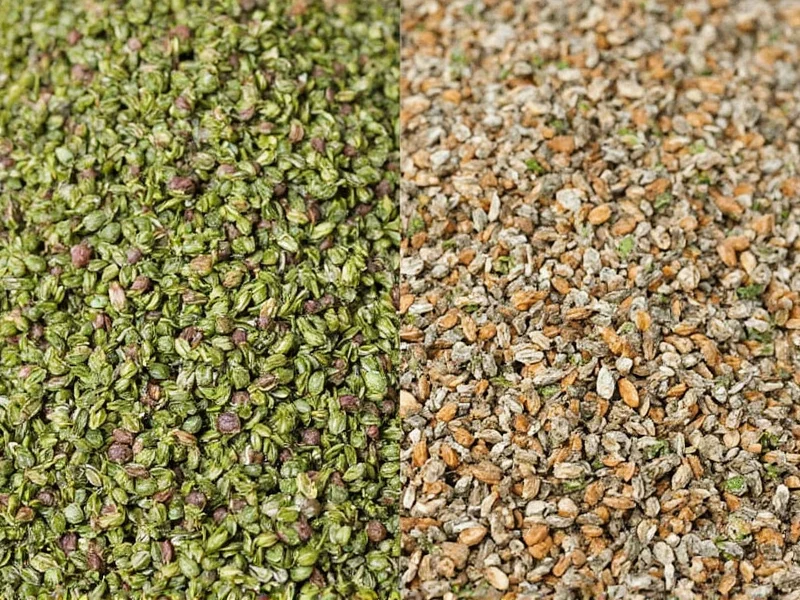Understanding the differences between dried and fresh oregano transforms your cooking results. This versatile Mediterranean herb appears in countless recipes, but choosing the right form significantly impacts flavor development. Let's explore the science-backed distinctions that matter most in your kitchen.
Flavor Chemistry: Why Dried and Fresh Oregano Taste Different
Oregano's essential oils undergo chemical changes during the drying process. Fresh oregano contains higher levels of volatile compounds like carvacrol and thymol that provide bright, grassy notes. When dried, these compounds concentrate while others evaporate, creating a more intense, earthy profile. Food science research shows dried oregano contains approximately three times the flavor compounds by weight compared to fresh.
Potency Comparison: The 3:1 Rule Explained
The widely accepted substitution ratio isn't arbitrary—it's based on moisture content science. Fresh oregano is about 85% water, while dried contains only 5-10% moisture. This dramatic difference explains why:
| Measurement | Fresh Oregano | Dried Oregano |
|---|---|---|
| Volume | 1 tablespoon | 1 teaspoon |
| Weight | 2 grams | 0.7 grams |
| Flavor Compounds | Baseline | 3x concentration |
Culinary Applications: When to Choose Each Form
Professional chefs leverage both forms strategically based on cooking technique:
Best Uses for Dried Oregano
- Long-simmering dishes: Tomato sauces, stews, and braises (add early to allow flavor infusion)
- Dry rubs: Better adhesion and concentrated flavor penetration
- Bread doughs: Withstands baking temperatures without losing potency
- Marinades: Dissolves more readily in oil-based mixtures
Best Uses for Fresh Oregano
- Finishing touches: Sprinkled on pizza, grilled meats, or salads just before serving
- Vinaigrettes and fresh salsas: Provides bright, herbaceous notes
- Delicate dishes: Fish preparations where subtle flavor is preferred
- Cold preparations: Tzatziki, hummus, or chilled soups
Storage Science: Maximizing Shelf Life
Proper storage preserves flavor compounds differently for each form:
Dried Oregano Preservation
Store in airtight containers away from light and heat. Properly stored dried oregano maintains peak flavor for 1-2 years. Exposure to oxygen causes gradual degradation of essential oils—studies show a 15-20% flavor loss annually even with optimal storage.
Fresh Oregano Preservation
Treat like cut flowers: trim stems, place in water, cover loosely with plastic bag, and refrigerate. Change water every 2 days. This method extends freshness to 10-14 days versus 3-5 days when stored dry. Avoid washing until ready to use to prevent moisture-related spoilage.
Nutritional Differences: More Than Just Flavor
While both forms offer similar nutritional profiles, drying concentrates certain compounds:
- Dried oregano contains 3x more antioxidants by weight
- Fresh oregano provides higher vitamin C content (which degrades during drying)
- Both forms contain rosmarinic acid with anti-inflammatory properties
- Dried version has higher calcium and iron concentration per serving
Common Substitution Mistakes to Avoid
Many home cooks make these critical errors when swapping between forms:
- Using equal volumes: This creates overpowering dishes with dried oregano
- Adding fresh oregano too early: Delicate flavors cook out during long simmering
- Using dried oregano as garnish: Results in unpleasant texture and muted flavor
- Not adjusting for age: Older dried oregano loses potency—smell test before using
Professional Chef Tips for Optimal Flavor
Top culinary experts employ these advanced techniques:
- Bloom dried oregano: Briefly toast in olive oil before adding to dishes for enhanced flavor release
- Layer both forms: Use dried in cooking phase and fresh for finishing in tomato sauces
- Freeze fresh oregano: Chop and freeze in olive oil cubes for winter cooking
- Revive stale dried oregano: Add to hot liquid and let steep 5 minutes before using
Growing and Harvesting for Best Results
If growing your own oregano, harvest timing affects flavor intensity:
- For fresh use: Pick leaves just before flowering for most delicate flavor
- For drying: Harvest when flowers appear for maximum essential oil concentration
- Dry in dark, well-ventilated space at 70-80°F (21-27°C)
- Avoid direct sunlight which degrades flavor compounds











 浙公网安备
33010002000092号
浙公网安备
33010002000092号 浙B2-20120091-4
浙B2-20120091-4